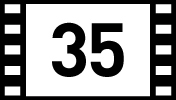

I've never been a big fan of Robert Montgomery. As both an actor and a director, I always find him stiff. But even William Keighley would have a hard time making a bad film when working from a script by Ben Hecht and Charles Lederer from a novel by Dorothy Hughes, in collaboration with producer Joan Harrison, cinematographer Russell Metty, and editor Ralph Dawson. And Montgomery is no William Keighley. He was an important innovator, one of the first actors of the sound era to become an actor/director, and he experimented with cinema in interesting, if not always successful ways. In his first directorial effort, the Raymond Chandler adaptation Lady in the Lake, he attempted to transpose Chandler's first-person narrative style directly into cinematic terms by filming the picture almost entirely from the protagonist's point of view. This subjective camera stunt wears thin pretty quickly, rendering the movie little more than an interesting gimmick. His second feature as director and star is far more effective.
In Ride the Pink Horse, Montgomery plays disillusioned ex-serviceman Lucky Gagin, who travels to a small town in rural New Mexico to blackmail a mobster named Frank Hugo (Fred Clark) who killed his best pal Shorty. Gagin is in over his head from the get-go; not speaking much Spanish, tailed by an FBI agent (Art Smith), and arriving in town during an annual fiesta when there are no hotel rooms available. On the non-tourist side of town, he's befriended by two locals—a Native American girl named Pila (Wanda Hendrix), and a Hispanic merry-go-round operator Pancho (Thomas Gomez in an Oscar-nominated performance). These two unexpected allies soon become invaluable to Gagin.
The culture clash of the fish-out-of-water, cynical former patriotic American who finds himself in the underworld setting of a tourist town populated by Mexicans and corrupt Anglos provides ample opportunity for the screenwriters to explore race, class, and gender in distinctly noir ways. The American characters care about little beyond money, power, and revenge while the "ethnic" street characters have a moral code. But nothing about the picture smacks of simplistic good guys / bad guys dynamics. Montgomery's protagonist is attacked and becomes disabled for most of the 2nd half of the movie, which practically takes him out of the story and makes Pila the character with the true narrative arc. Hendrix gives a fine performance, but since she's obviously not an actual Native American, there's a missing authenticity that seems a requirement for a figure so key to this story.
I still find Montgomery stiff as an actor, but the directing here is far more elegant than in his other films. The long tracking shots he and Metty devise are almost as impressive as Metty's later work with Orson Welles in Touch of Evil, and the noir lighting is as effective in terms of setting a mood as Metty's lavish color photography in his many later melodramas with Douglas Sirk. Montgomery and editor Ralph Dawson (three-time Oscar winner for A Midsummer Night's Dream, Anthony Adverse, and The Adventures of Robin Hood) devise some terrific, playful transitions from one sequence into another. And, of course, the dialogue by Hecht and Lederer sparkles. Along with producer Joan Harrison, the screenwriting team make several smart twists on the source novel by the criminally unsung crime writer Dorothy B. Hughes (The Bamboo Blonde, In a Lonely Place). Harrison herself is another of the great lesser-known figures in Film Noir. She worked for years as a screenwriter and producer for Alfred Hitchcock and made two iconic noirs with Robert Siodmak, Phantom Lady and The Strange Affair of Uncle Harry, before essentially becoming an independent producer and finally ending up in prestige TV.
In the year that saw the release of more great film noirs than any other, 1947's Ride the Pink Horse may not be one of the greatest examples of the genre, but it's certainly one of the most unusual.
All the stars aligned behind and in front of the camera for this wonderfully off-kilter fish-out-of-water film noir set in rural New Mexico that explores race, class, and gender in a way only the noir form can.



